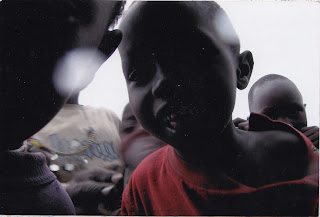Every morning, the cats of Walnut street gather around the door of 1228 and wait for Chaucer to appear. Sometimes he comes from an upper story window. Sometimes he squeezes out from beneath the house’s foundation. There was a time when the cats didn’t have to wait, back before the owners boarded up the cat door, but now Chaucer’s appearance to his followers is entirely contingent on an arms race between him and the plywood boards rapidly accumulating over every possible exit. He will not be thwarted so easily.
Chaucer is not a beautiful cat. He rarely eats, and his ribs look as if they’re trying to press themselves out through his patchy dark grey fur. He’s missing an ear, and his eyes water constantly. They water because of the visions. Chaucer, being a cat, has no way of communicating his visions to his followers, but there is a shared understanding that the visions occur, and that they are accurate. Every morning, when Chaucer finally struggles out of some tiny crack in his owners’ defenses, he pauses for a moment and surveys his adherents. They stare back at him, their eyes unblinking so as not to miss a potential moment of insight. In his stillness they see a confidence born of clairvoyance.
Before the owners boarded up the cat door, the den of the apartment was the seat of bliss. Cats would gather from all over the neighborhood to commune with Chaucer. Strays would bring him gifts of dead mice. Females in heat would walk miles to present themselves to him. And in return, he would grant them the understanding that he knew something, something perfectly, mysteriously true. Now, all he can do is lead his posse around the neighborhood, guiding them with unerring accuracy to every rathole, bird’s nest, and richly stocked dumpster in the area. But that is all secondary. The reason the cats gather in front of 1228 Walnut every morning is not so much to gain any specific wisdom, because there is no way that they can. What they crave, what they see every time Chaucer finds a new crevice to slip through, is how a cat even more confined than themselves can remain totally, magnificently free.

